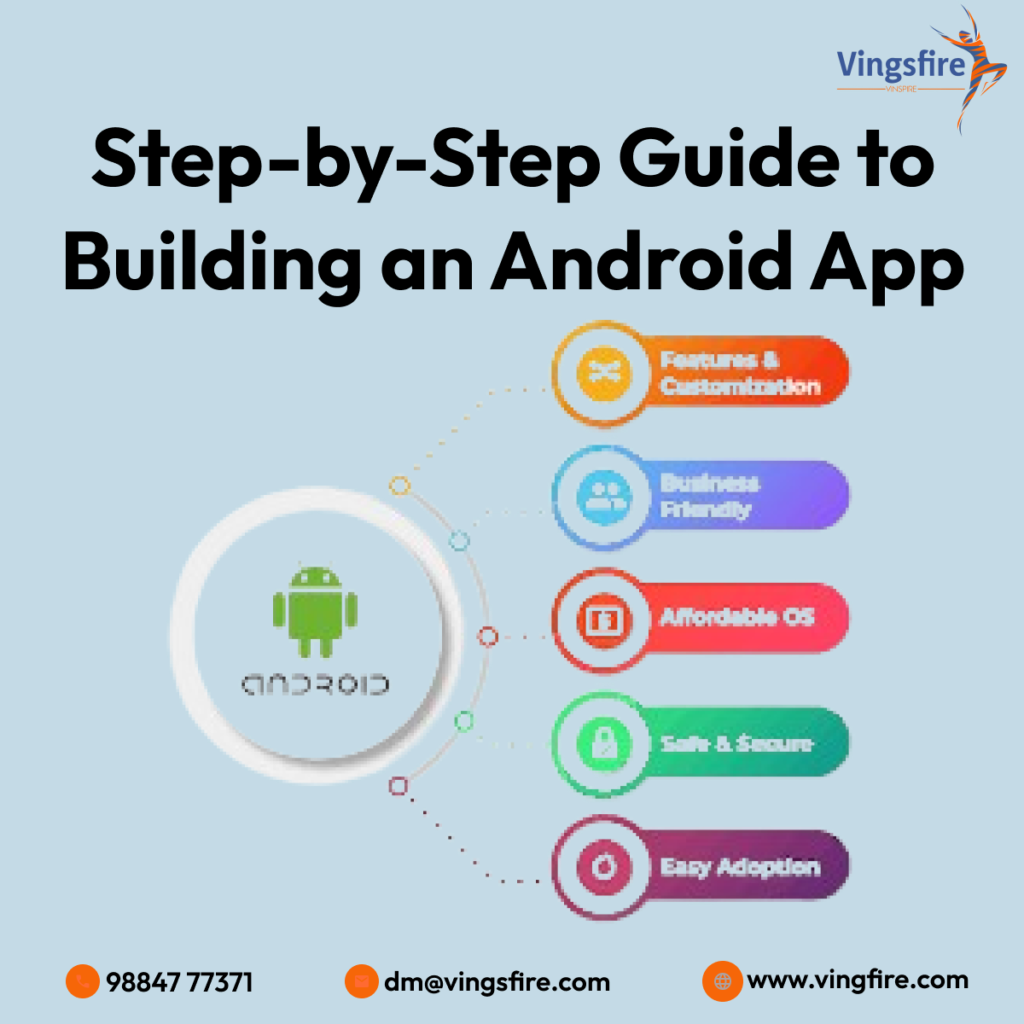
Step-by-Step Guide to Building an Android App
Keywords: build android app
Introduction:
Building an Android app can seem like a daunting task, but with the right guidance, anyone can create their own mobile masterpiece. In this step-by-step guide, we’ll walk through the process of building an Android app from start to finish, empowering you to bring your app ideas to life.
Define Your App Idea:
The first step in building an Android app is to define your app idea. What problem does your app solve? Who is your target audience? Take the time to brainstorm and refine your app concept to ensure it’s unique, viable, and valuable to users.
Research and Planning:
Once you have a clear app idea, it’s essential to conduct thorough research and planning. Explore similar apps in the market, analyze their features, strengths, and weaknesses, and identify opportunities for differentiation. Create a detailed project plan outlining the app’s functionality, user interface, and technical requirements.
Choose the Right Development Tools:
Android app development requires the right set of tools and technologies. Choose an Integrated Development Environment (IDE) such as Android Studio, which provides a suite of tools for designing, coding, testing, and debugging Android apps. Familiarize yourself with the Android Software Development Kit (SDK) and other relevant frameworks and libraries.
Design Your App’s User Interface:
Designing an intuitive and visually appealing user interface is crucial for the success of your Android app. Use tools like Sketch or Adobe XD to create wireframes and mockups of your app’s screens and navigation flow. Pay attention to usability principles, visual design guidelines, and platform-specific considerations.
Develop Your App’s Features:
With your app’s design in place, it’s time to start coding. Android app development primarily involves writing code in Java or Kotlin, the official programming languages for Android. Use Android Studio to create activities, fragments, and layouts, and implement features such as user authentication, data storage, and networking.
Test Your App:
Testing is a critical phase of the app development process to ensure your app functions as intended and delivers a great user experience. Perform both manual and automated testing to identify and fix bugs, usability issues, and performance bottlenecks. Leverage tools like Android Emulator and Firebase Test Lab for comprehensive testing across various devices and configurations.
Optimize for Performance and Compatibility:
As you near completion of your app, focus on optimizing its performance and compatibility. Ensure your app loads quickly, responds smoothly, and functions seamlessly across different Android devices, screen sizes, and orientations. Optimize memory usage, network requests, and battery consumption to enhance user satisfaction and retention.
Publish Your App to Google Play Store:
Congratulations! Your Android app is ready for launch. To publish your app on the Google Play Store, create a developer account, prepare your app’s listing, including screenshots, descriptions, and keywords, and upload your APK file. Follow Google’s guidelines and policies to ensure your app meets the store’s requirements.
Promote Your App and Gather Feedback:
Once you build android app and your app is live on the Google Play Store, it’s time to promote it and gather user feedback. Leverage digital marketing channels such as social media, email newsletters, and app review websites to reach your target audience and encourage downloads. Monitor user reviews and ratings, respond to feedback promptly, and iterate on your app based on user insights.
Iterate and Improve:
Building an Android app is an iterative process. Continuously monitor your app’s performance, analyze user behavior, and collect feedback to identify areas for improvement. Regularly release updates with new features, bug fixes, and enhancements to keep your app relevant, engaging, and competitive in the ever-evolving app market.
Conclusion:
Building an Android app is a rewarding endeavor that requires careful planning, creativity, and technical expertise. By following this step-by-step guide, you can navigate the app development process with confidence and bring your app ideas to life. Whether you’re a seasoned developer or a novice enthusiast, building an Android app is within reach, and the possibilities are endless.




